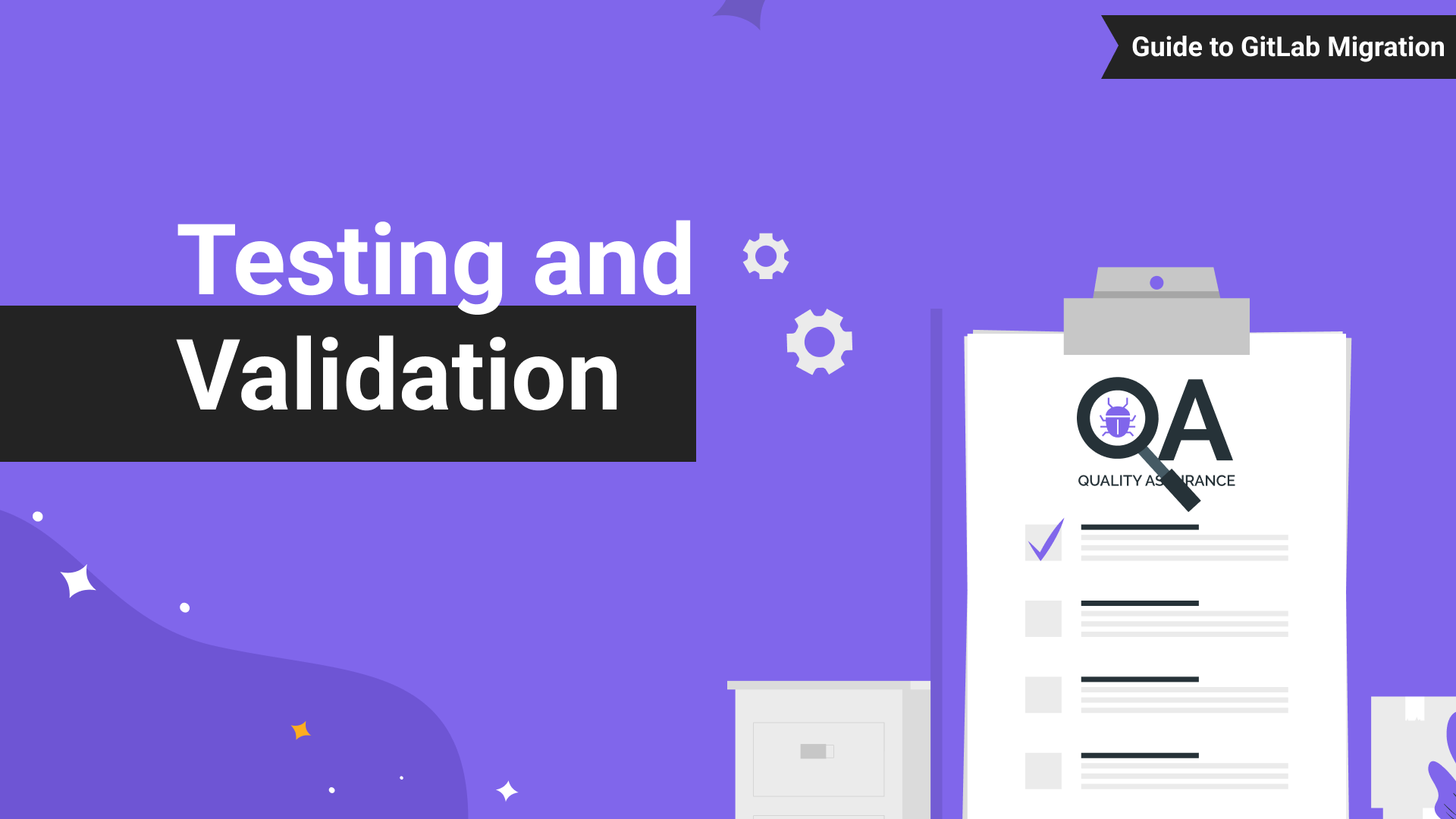
Testing and Validation for a Successful GitLab Migration
Testing and Validation for a Successful GitLab Migration
Thorough testing and validation are indispensable to confirm the success of the GitLab migration. They provide assurance that all aspects of the GitLab environment—from data integrity and functionality to performance and security—are operating optimally in the new setup.
Develop a Testing Plan
Start by outlining clear testing scenarios that cover all functionalities, processes, and integrations affected by the migration. Establish specific criteria for success for each scenario to ensure comprehensive validation. Include load testing and performance benchmarking in your plan to evaluate the GitLab SaaS environment under various stress conditions.
Execute Testing
Conduct the defined testing scenarios, documenting the outcomes for each. Clear documentation is critical for tracing issues back to their source and verifying that all migration objectives have been met. Address identified issues based on their impact on operations and execute retesting as needed to confirm that all concerns have been resolved.
Plan for Load Testing and Performance Benchmarking
Include load testing and performance benchmarking in your plan to evaluate the GitLab SaaS environment under various stress conditions. This ensures that the platform can handle your organization’s demands. Compare pre-migration performance benchmarks with post-migration metrics to assess any changes in response times, resource utilization, and throughput. This helps in identifying areas for optimization.
Execute Testing
Conduct the defined testing scenarios, documenting the outcomes for each. Clear documentation is critical for tracing issues back to their source and verifying that all migration objectives have been met. Address identified issues based on their impact on operations and execute retesting as needed to confirm that all concerns have been resolved.
User Acceptance Testing (UAT)
Involve end-users in the testing phase to ensure the migrated environment meets their needs and expectations. User Acceptance Testing (UAT) is crucial for identifying any usability issues and ensuring that workflows remain smooth and efficient post-migration. Collect feedback from users and make necessary adjustments based on their input.
Address Identified Issues
Testing will inevitably uncover areas that need adjustment or improvement. Prioritize these issues based on their impact on operations and address them systematically. Repeat testing as needed to confirm that all concerns have been resolved and the environment is fully operational.
Continuous Monitoring
Even after the initial testing and validation phases, continuous monitoring is essential to ensure ongoing performance and stability. Use GitLab’s built-in monitoring tools to track system health, usage patterns, and potential issues. Set up alerts for critical metrics to proactively address any problems before they impact users.
By implementing thorough testing and validation processes, you can ensure a seamless transition to GitLab SaaS. For a comprehensive guide on testing and validation strategies, download our free “Guide to GitLab Migrations” from this landing page.
